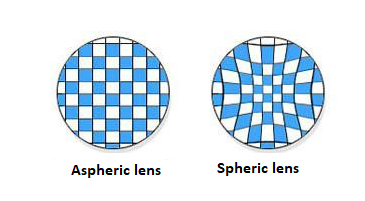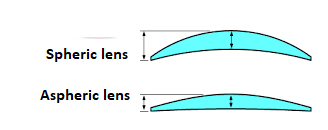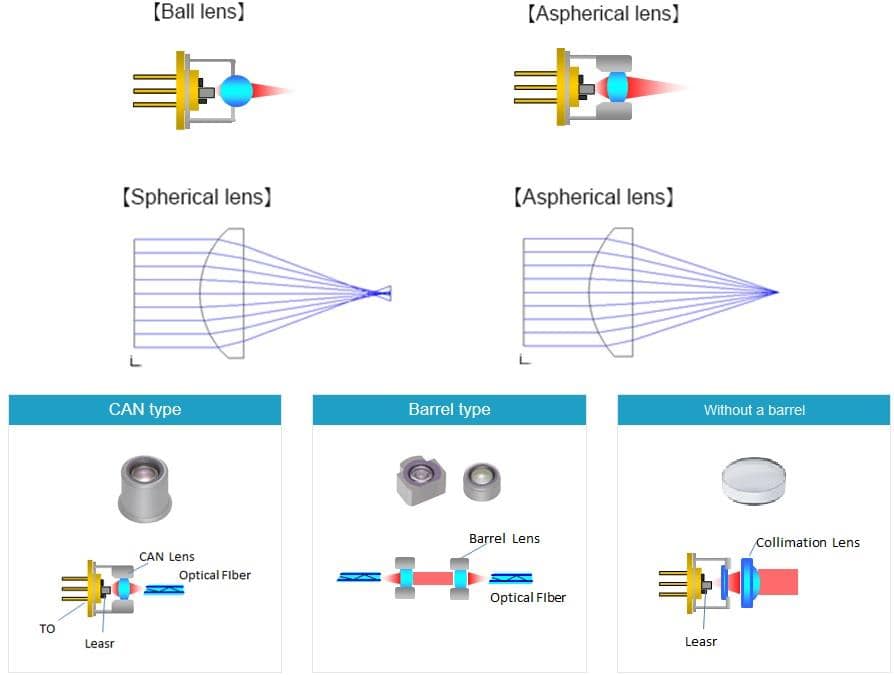We learned there in high school physics that there is a type of converging lens, called a spherical lens that is used in various optical devices such as magnifying glasses, binoculars, telescopes and even glasses.
We even learned to calculate its focal length and see how the images obtained by this lens project.
However, this type of lens has some problems that impair image quality, especially in applications where they must be larger and in which the images are free of distortions.
As the name says, these lenses consist of pieces of spheres, or covers cut in such a way that at the edges the thickness of the material is less than in the center. Since the material has a different refractive index than air, this type of lens tends to distort the image, as shown in figure 1.

Evidently, in a critical application, for example, in glasses, optical fiber data communication, cameras, this distortion can be inconvenient affecting the image quality.
To overcome this problem, new lens manufacturing technologies have led to a new type of converging lens.
Aspherical lenses continue to converge and are derived from the spherical shape, but the difference between the thickness in the center and the edges is smaller, which decreases the distortion, as shown in figure 2,

So, with them, in addition to having a thinner optical feature, we have much less distortion of the images.
Currently, in the most critical applications ranging from glasses and imaging equipment that use lenses, optoelectronics applications such as fiber optic communications are in electronics,
In figure 3 we have the Panasonic illustration to show the difference between the two types of lenses.
In the illustration we see clearly that the two types have the same basic characteristics but have different performances.
Be aware of the type of lens you are going to use in your next project that includes optoelectronics features.




